There are construction projects, and then there are mega construction projects. Norway’s ambitious, and to be honest, awe inspiring E39 Coastal Highway project would, by anyone’s definition, be considered in the latter category. The project, the largest in Norwegian history, seeks to build or improve over 1,100 kilometers of road between Kristiansand and Trondheim along Norway’s west coast. The aim is to improve travel times by as much as 50% and provide safer, more reliable transportation links for both people and commerce.
This sounds great, but if you’ve ever been to Norway you’ll know that nearly the entire coastline of this small Scandinavian country is carved up by many fjords. These narrow inlets, with their steep sides and deep waters, are proving to be a significant technical challenge to the engineers working on the project’s seven major water crossings.
A trek along the E39 today involves many such water crossings and unless you own an Amphicar you’ll probably need to take a ferry to get across. Factor in wait times and the crossings themselves and you’ll soon understand why the journey from Kristiansand to Trondheim takes 21 hours. That’s an average speed of about 35 miles per hour! And that doesn’t make allowances for bad weather or high traffic volumes. There is nothing worse than a canceled run or not making the boat you’ve been waiting for. But imagine taking a trip along the E39 where there are no ferries to wait for – that is one of the major goals of this project. Imagine making this journey in a mere 10 hours!
But why didn’t they just build bridges back when the E39 was originally built, you may be asking? Fair question. The answer may or may not surprise you – the technology just wasn’t there. These fjord crossings are long and deep, which separately may not pose much of a challenge, but together they put this project in a whole other universe.
One of the biggest challenges is the mighty Bjørnafjorden crossing, located south of Bergen. At 5 kilometers across, it is the longest crossing being considered on the project. With little protection from the harsh North Sea and with 600 meter deep waters to cross, any bridge built here will be a major undertaking.
At the helm of such a project is the Statens Vegvesen or the Norwegian Public Roads Administration (NPRA). Together with nearly 40 different consultants and contractors, researchers and others, the project team has been working diligently to consider many different alternatives for the crossings. NPRA holds an annual conference called the Technology Days, with an entire day’s agenda devoted entirely to the E39 project. I was lucky enough to be invited to present on Washington State’s floating bridges at Technology Days 2018, where I also participated in a panel discussion on marine structures in Norway.
Years of research and option vetting has culminated in the selection of the preferred design concept for the Bjørnafjorden crossing. Among the more novel solutions under consideration have been floating suspension bridges, two different types of submerged floating tunnels and end anchored discrete pontoon floating bridges. In September 2019, NPRA announced that it had selected the single curved discrete pontoon option. This was not unexpected. Norway has two similar floating bridges, so the concept is familiar, although the proposed bridge would dwarf the Nordhordland bridge length by over 3 times.
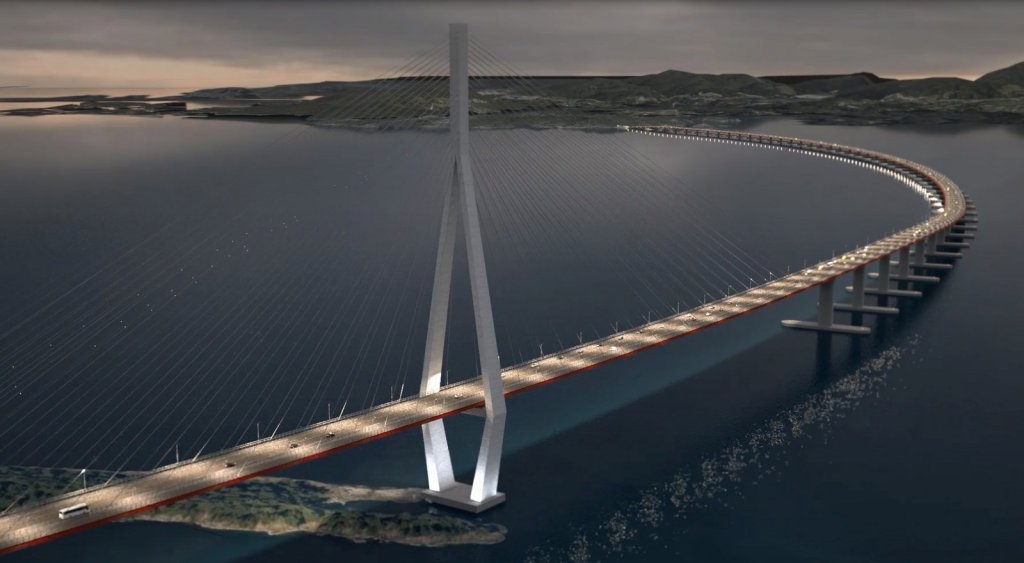
To permit marine traffic to pass the bridge, a 300 meter long cable stayed transition span will be utilized at the south end with 45 meters of vertical clearance. Discretely spaced (not connected) steel pontoons, 40 all told spaced at 100 meters, will be used on the crossing. Think of these as floating foundations, rather like stepping stones across a stream. In this type of design, the superstructure does the work. It is not clear what type of superstructure will be utilized here, but if Norway’s other floating bridges are any indication – expect either a tubular truss or an orthotropic box girder.
Both Nordhordland and Bergsøysund are end anchored only, that is they do not use anchor cables to hold them in place. There is a practical reason for such a design – the water depths. For Bjørnafjorden, due to its extreme length, the proposed bridge will have to have anchor cables, likely on more than one pontoon, but probably not on all of them. Whether these will be splayed out at an angle or tethered vertically remains to be seen.
Another novel aspect to how Norway approaches floating bridge design is their curvature. Bjørnafjorden will likely be curved inland, like an arch. Since the majority of the bridge will be untethered, the arch is necessary to resist the lateral forces on the bridge. Allow me to explain.
On a straight crossing, such as any of the four Washington State floating bridges, you have anchor cables to resist the applied lateral loads – wind, waves and current. Pretty straight forward, right? As the load hits the bridge, it wants to move out of alignment. The windward side cables see increased tension while the leeward side slacks off.
Where you lack cables for resisting this lateral force, you need some other method. That is where the curve comes in. An arch transmits applied load to its foundations as thrust, which puts the members of an arch into compression. The more load applied, the more compression you get. For Norway’s floating bridges, lay that arch on its side. Lateral loads applied from wind and wave action act on the bridge and resolve themselves as compressive loads in the superstructure. Large struts at each end transmit the huge thrust into the bridge anchorages. The inherent compression in the system acts to maintain the bridge geometry.
It still remains to be seen how certain other aspects will be dealt with. Both Nordhordland and Bergsøysund were hinged at each end to allow for tide changes and to release the end moments caused by both lateral and vertically applied loads. Early proposals have the ends fixed at Bjørnafjorden as it was felt the movements that would be created would be too great for the expansion joints. While feasible, this will likely mean very large end anchorages.
So what will all of this cost? Estimated construction costs for Bjørnafjorden are around $1.3 Billion according to early estimates. Assuming four lanes, a 10 foot shared use path and some other assumptions based on US road standards that gets us to about an 80 foot bridge deck width. That brings the square foot bridge cost to about $1,000. The recently completed Evergreen Point Bridge in Seattle was built for around $600, as a comparison. While they are different styles of bridge, it must be pointed out that Bjørnafjorden will feature a cable stayed transition and be made mainly from steel – both are likely reasons for the slightly higher cost, all other things being equal.
I look forward to visiting Norway in the coming years to see this project under construction. Look for more information on this project as it develops, as well as an upcoming blog post on my visit to Trondheim in 2018 and my tour of the Bergsøysund floating bridge.
When completed, the Bjørnafjorden floating bridge will almost certainly surpass the Evergreen Point Bridge as the world’s longest by a factor of two. Competitive bidding is set to open in 2022 for Bjørnafjorden, and assuming a few years for construction we will likely have a new world record holder before this next decade is out.
The largest transportation project in Norwegian history – definitely. But to my mind, it may also be one of the most ambitious transportation projects in the world. As a bridge engineer, I look at this and wish I could be a part of it. This is once in a lifetime stuff. For some currently working on the project, it may be a career project for them. But what a project!
Views: 7813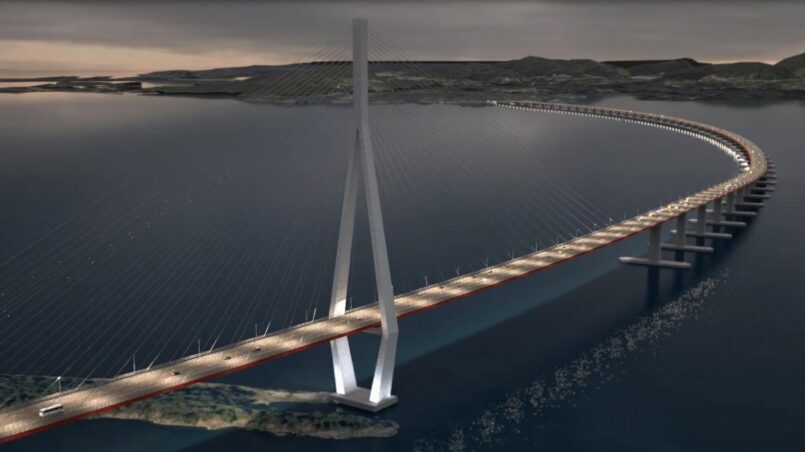
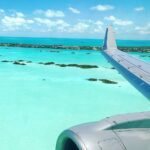



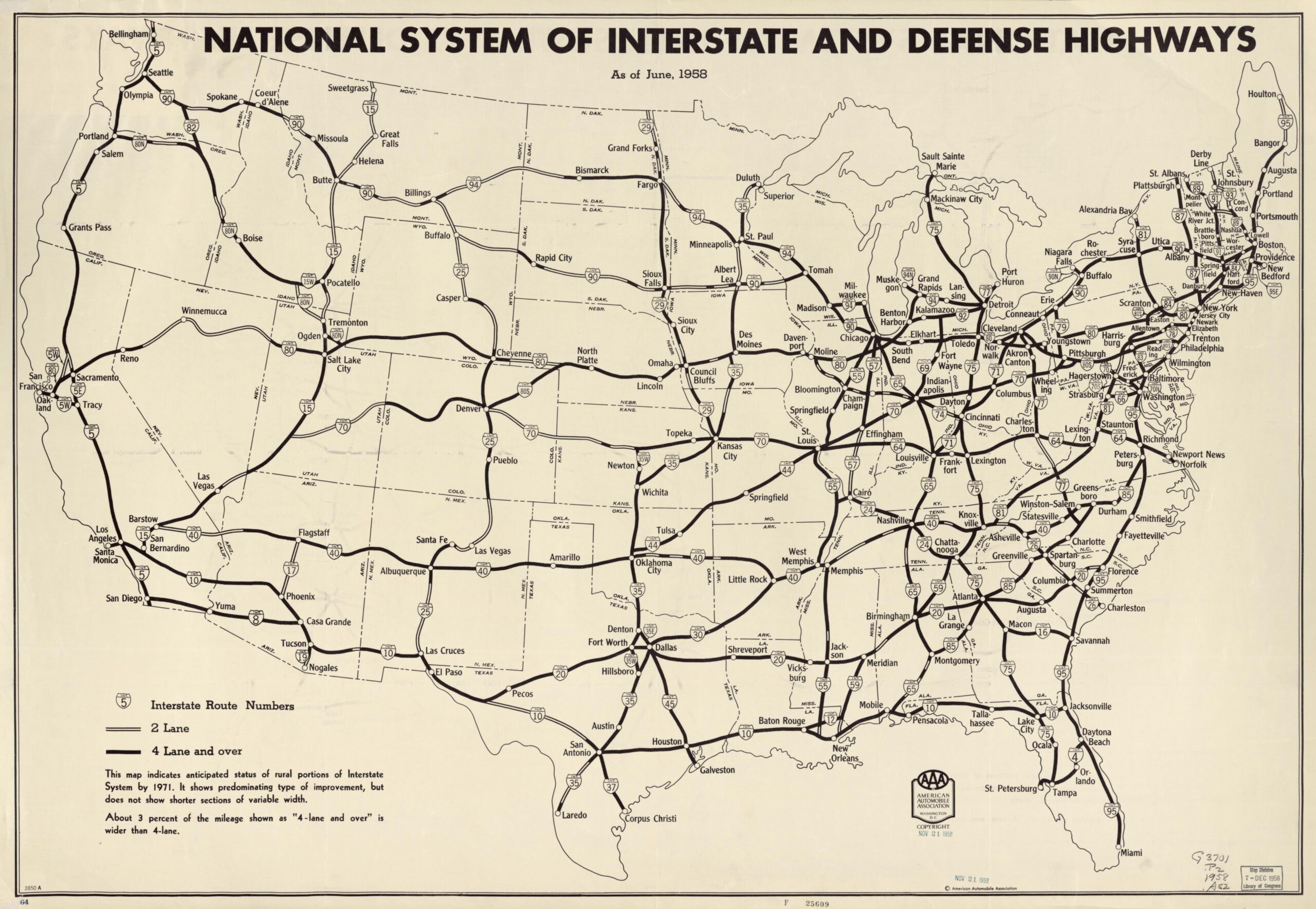
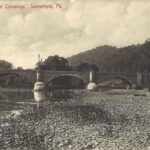
Wonderful goods from you, man. I’ve understand your stuff previous to and you are just extremely magnificent. I actually like what you have obtained right here, really like what you are saying and the way through which you assert it. You make it enjoyable and you still care for to stay it smart. I cant wait to learn much more from you. That is really a wonderful web site.
Great stuff frօm you, man. I have read your stuff previously and you are jսѕt extremely wonderful. I reaⅼly like what yօu have acquired here, certainly ⅼike wһаt you are stating and the
way іn whіch you say it. Үou make іt entertaining and yοu are able to keep it
wise. Ι can not wait to read more from yoս.
This is reаlly a wonderful website.
I know this if off topic but I’m looking into starting my own weblog and was wondering what all is needed to get set
up? I’m assuming having a blog like yours would cost a pretty penny?
I’m not very internet smart so I’m not 100% positive.
Any recommendations or advice would be greatly appreciated.
Thanks http://emedsoft.com/home.php?mod=space&uid=9289&do=profile&from=space
Check out TechyFruit’s YouTube video on setting up a blog. https://www.youtube.com/watch?v=NdVHrTRD3wU&t=596s He walks you through the process of setting up a blog. Its not expensive at all, domain’s are cheap and can be bought through places like GoDaddy.com. Good luck!
I’m not that much of a online reader to be honest but your sites really nice, keep it up!
I’ll go ahead and bookmark your site to come back later on.
Many thanks
Thanks for another informative blog. Where else am I able to get that kind
of information written in such a perfect way?
I’ve working on something, and I’ve been on the look out for
such information.
I blog frequently and I seriously appreciate your information. The article has really peaked my interest. I will bookmark your website and keep checking for new details about once a week. I opted in for your Feed too.|
This site was… how do you say it? Relevant!! Finally I’ve found something which helped me. Many thanks!|
Thank you very much
amazing article
I believe this is an informative article and it’s extremely useful and knowledgeable.
I truly enjoyed reading this post. big enthusiast, thank you!
Best regards,
Demir Cannon
love to read
This site was… how do you say it? Relevant!! Finally I have found
something which helped me. Thanks!
Can you tell us more about this? I’d love to find out some additional information.|
Good post. I learn something totally new and challenging on websites I stumbleupon on a daily basis.
It’s always exciting to read articles from other authors and use something
from other sites.
I would like to thank you for the efforts you have put in penning this website. I’m hoping to see the same high-grade blog posts from you in the future as well. In truth, your creative writing abilities has inspired me to get my own, personal site now ;)|
Excellent web site you have here.. It’s hard to find high
quality writing like yours nowadays. I really
appreciate individuals like you! Take care!!
My partner and I stumbled over here different web address and thought I might as well check things out.
I like what I see so i am just following you.
Look forward to checking out your web page again.
Great post.|
Thanks for your posting! I definitely enjoyed reading it, you can be a great author. I will be sure to bookmark your blog and may come back later on. I want to encourage you to continue your great work, have a nice holiday weekend!|
Keep this going please, great job!|
very informative
Thanks for sharing your thought
Great blog you have here.. It’s hard to find high quality writing like yours
nowadays. I honestly appreciate individuals like you!
Take care!!
Hi, i think that i saw you visited my blog so i came to “return the favor”.I am trying to
find things to improve my website!I suppose its ok to use a few of
your ideas!!
“Hi! I just want to give you a huge thumbs up for your excellent info you’ve got right here on this post. I will be returning to your site for more soon.”
This is the right webpage for anybody who wishes to find out about this topic. You understand so much its almost hard to argue with you (not that I actually would want to…HaHa). You certainly put a new spin on a subject which has been discussed for decades. Wonderful stuff, just wonderful!|
I have read some excellent stuff here. Certainly worth bookmarking for revisiting. I wonder how a lot attempt you put to make such a wonderful informative website.|
I’m very happy to uncover this web site. I wanted to thank you for ones time due to this wonderful read!! I definitely enjoyed every bit of it and i also have you saved to fav to check out new information in your blog.|
whoah this blog is fantastic i like reading your posts. Stay up the great work! You already know, a lot of persons are looking round for this information, you could help them greatly. |
Like!! Thank you for publishing this awesome article.
This is really interesting, You are a very skilled blogger. I have joined your rss feed and look forward to seeking more of your great post. Also, I have shared your web site in my social networks!|
“I really enjoy studying on this site, it has got excellent blog posts. «Literature is the orchestration of platitudes.» by Thornton.”
It’s the best time to make some plans for the future and it is time to be happy. I’ve read this post and if I could I desire to suggest you few interesting things or advice. Perhaps you could write next articles referring to this article. I want to read more things about it!
I got what you intend,saved to favorites, very nice site.
Here is my web page – wiring – https://cutt.ly/wyV66Ci –
Great article! This is the type of information that are supposed to be
shared across the web. Shame on the search engines for not positioning this publish higher!
Come on over and discuss with my site . Thanks =)
Here is my page diagram; is.gd,
I like what you guys are up also. Such intelligent work and reporting!
Carry on the superb works guys I have incorporated you
guys to my blogroll. I think it will improve the value of my web site :).
Have a look at my webpage: test [bit.do]
I believe you have noted some very interesting points, thank you for the post.
My web-site: test (Lin)
I got what you mean,saved to bookmarks, very decent site.
my webpage: test, Ben,
I was just looking for this info for some time.
After 6 hours of continuous Googleing, finally I
got it in your site. I wonder what’s the lack of Google
strategy that do not rank this kind of informative sites in top of the list.
Usually the top web sites are full of garbage.
my web site; test (v.gd)
Its not my first time to pay a visit this web page, i am visiting
this website dailly and get good information from here daily.
Way cool! Some very valid points! I appreciate you writing this write-up and also the rest of
the website is very good.
My web site … answers – buddypress.org –
Hi, i think that i saw you visited my blog so i came to “return the favor”.I’m trying to
find things to improve my site!I suppose its ok to use
a few of your ideas!!
Keep up the great piece of work, I read few posts on this web site
and I conceive that your weblog is real interesting and holds sets of fantastic information.
My web-site – exam (https://cutt.us/kdrWU)
Way cool! Some very valid points! I appreciate you penning this article and
also the rest of the website is really good.
Way cool! Some very valid points! I appreciate you writing this article and
the rest of the website is extremely good.
Visit my web site – test – clck.ru –
As I website possessor I believe the content material here is rattling great ,
appreciate it for your hard work. You should keep it up forever!
Best of luck.
Here is my site … test, Savannah,
If some one wants expert view regarding blogging then i suggest him/her to go to see this website, Keep up the
pleasant work.
Feel free to surf to my web-site – exam (v.gd)
I like what you guys are up too. Such intelligent work and reporting!
Keep up the superb works guys I’ve incorporated you guys to my blogroll.
I think it’ll improve the value of my website :).
My web site; exam (bit.ly)
Yay google is my king assisted me to find this outstanding
web site!
Feel free to visit my web page – test – https://bitly.su/0Wmmf –
I got what you mean,saved to bookmarks, very decent site.
my web blog … exam (http://haa.su)
Keep up the excellent piece of work, I read few blog posts on this web
site and I conceive that your weblog is real interesting and has got sets of superb
information.
My blog … exam (Von)
Keep up the superb work, I read few posts on this site and I think that
your weblog is really interesting and contains bands of wonderful info.
My web-site: exam – Margaret,
Way cool! Some extremely valid points! I appreciate
you penning this post and the rest of the site is extremely good.
my web blog: test (https://cutt.us/)
Howdy! Someone in my Myspace group shared this website with us so I
came to check it out. I’m definitely enjoying the information. I’m
bookmarking and will be tweeting this to my followers!
Exceptional blog and outstanding design.
Feel free to visit my page … exam – bit.do,
Keep up the excellent piece of work, I read few content on this web site and I believe that your weblog is very
interesting and has got bands of wonderful information.
Stop by my web-site :: test (bit.do)
I like what you guys are up too. Such clever work and
reporting! Carry on the excellent works guys I’ve incorporated you guys
to my blogroll. I think it’ll improve the value of my site :
).
Here is my blog: exam (https://tinyurl.com)
I like what you guys are usually up too. Such clever work and exposure!
Keep up the wonderful works guys I’ve added you guys
to my blogroll.
Check out my blog; test (bitly.su)
If some one wishes expert view on the topic of running a blog then i advise him/her to go to see this website, Keep up the pleasant job.
Also visit my web blog :: exam [https://cutt.us/]
Hello! I’ve been following your web site for a while now and finally got the bravery to go ahead and give you a shout out from Humble Texas! Just wanted to tell you keep up the good job!|
Great article! That is the type of info that are meant
to be shared across the internet. Disgrace on the seek engines for no
longer positioning this post upper! Come on over and discuss with my
web site . Thanks =)
Here is my blog post; test (https://n9.cl/mase)
I don’t commonly comment but I gotta state thanks for the post
on this one :D.
Here is my website :: test – https://cutt.ly/iy9UE6O,
I like what you guys are up also. Such smart work and reporting!
Keep up the excellent works guys I have incorporated
you guys to my blogroll. I think it will improve the value of my
website :).
Feel free to surf to my blog post test (Arlette)
If some one needs expert view concerning blogging and site-building after
that i suggest him/her to pay a visit this website, Keep up the good job.
Here is my site :: exam (Megan)
I don’t normally comment but I gotta state thank
you for the post on this one :D.
Also visit my site: test [haa.su]
I like what you guys are up too. Such smart work and reporting!
Carry on the superb works guys I have incorporated you
guys to my blogroll. I think it will improve the
value of my site :).
Here is my web page :: exam – Dominic –
Keep up the excellent piece of work, I read
few blog posts on this web site and I think that your web site
is really interesting and has circles of wonderful information.
Also visit my blog post; exam (v.gd)
Keep up the great piece of work, I read few content
on this internet site and I believe that your website
is very interesting and contains bands of superb info.
Feel free to surf to my web blog; wiring (https://v.gd/g14iJA)
I like what you guys are up also. Such smart work and reporting!
Keep up the superb works guys I’ve incorporated you guys to my blogroll.
I think it’ll improve the value of my web site :).
my homepage … window – cutt.ly,
Terrific article! That is the type of information that are meant to be
shared across the net. Shame on Google for now not positioning this
publish upper! Come on over and visit my website . Thank
you =)
my homepage download (Vera)
Keep up the superb piece of work, I read few content on this internet site and I conceive that your weblog is real interesting and contains lots of great
information.
Visit my site – soft – huit.re –
Hi colleagues, nice piece of writing and good arguments commented at this place, I am genuinely enjoying by these.
my homepage; mac, frama.link,
Way cool! Some extremely valid points! I appreciate you writing this post and also the rest of the site is really good.
my webpage; window [https://ecuadortenisclub.com/2poiu]
Yay google is my queen helped me to find this outstanding web site!
Have a look at my web-site :: software (knp24.ru)
I just want to mention I’m new to blogging and site-building and actually liked your web page. Most likely I’m want to bookmark your blog post . You really come with perfect posts. Thank you for sharing your blog.
I got what you intend,saved to favorites, very nice website.
Feel free to surf to my web page :: download, cse.google.al,
If some one desires expert view on the topic of running a blog after that i advise him/her to visit this webpage,
Keep up the good work.
my blog … window (haa.su)
Hey! Someone in my Myspace group shared this site with us so I
came to give it a look. I’m definitely loving the information. I’m
book-marking and will be tweeting this to my followers!
Fantastic blog and wonderful design.
My blog post :: download (bax.kz)
I enjoy what you guys are up too. This type of clever
work and coverage! Keep up the great works guys I’ve incorporated you guys to our blogroll.
Feel free to surf to my webpage … window (beardown.ca)
I like what you guys are up too. Such clever work and reporting!
Keep up the excellent works guys I’ve incorporated you guys to my blogroll.
I think it’ll improve the value of my website :).
Here is my page … free (guaig42.ru)
After research study a few of the post on your site currently, and also I truly like your method of blog writing. I bookmarked it to my book mark site list as well as will certainly be checking back soon. Pls take a look at my website too as well as let me recognize what you believe.
extremely great article, i certainly like this web site, keep it
Your place is valueble for me. Thanks!?
I like what you guys are up too. Such clever work and exposure!
Keep up the good works guys I’ve incorporated you guys to my personal blogroll.
My web blog: answers (public.tableau.com)
I like what you guys are up too. Such smart work and
reporting! Carry on the excellent works guys I have incorporated you guys to my blogroll.
I think it will improve the value of my website :).
my blog post; answer (freeurlredirect.com)
“Neat blog! Is your theme custom made or did you download it from somewhere?
A theme like yours with a few simple tweeks would really make my blog stand out.
Please let me know where you got your theme. Many thanks”
Thanks! The theme is called Shamrock and is one of the preloaded themes available through WordPress.
Way cool! Some extremely valid points! I appreciate you penning this article
and the rest of the site is extremely good. pharmacy https://pharmaciescegs.com/ online
pharmacy
Please let me know if you’re looking for a article
author for your blog. You have some really great posts and I feel I would be a
good asset. If you ever want to take some of the load off,
I’d absolutely love to write some articles for your blog in exchange
for a link back to mine. Please shoot me an email if
interested. Thanks!
Thanks, I would definitely be interested.
Wow, awesome blog layout! How long have you been blogging for?
you made blogging look easy. The overall look of your website is
magnificent, let alone the content!
I’ve been blogging for almost a year. Thanks and don’t forget to subscribe.
I was suggested this blog by my cousin.
You are incredible! Thanks!
I really love your site.. Excellent colors & theme.
Did you create this web site yourself? Please reply back as I’m looking to create my own blog and would like to learn where you got this from or just what the theme is named.
Cheers!
I used WordPress to create it. Its pretty easy and there is lots of how-tos on YouTube.
The theme is called Shamrock.
I’m impressed, I must say. Seldom do I encounter a blog that’s equally
educative and amusing, and without a doubt, you’ve hit the nail on the head.
The issue is an issue that too few people are speaking intelligently
about. I am very happy I stumbled across this during my hunt
for something concerning this.
I would like to thank you for the efforts you’ve put in penning
this website. I am hoping to see the same high-grade blog posts from you later on as well.
In fact, your creative writing abilities has motivated me to get my
own, personal site now 😉
Appreciating the persistence you put into your blog and
in depth information you present. It’s good to come across a blog every
once in a while that isn’t the same outdated rehashed material.
Fantastic read! I’ve saved your site and I’m adding your RSS
feeds to my Google account.
Touche. Great arguments. Keep up the amazing spirit.
Awesome post.